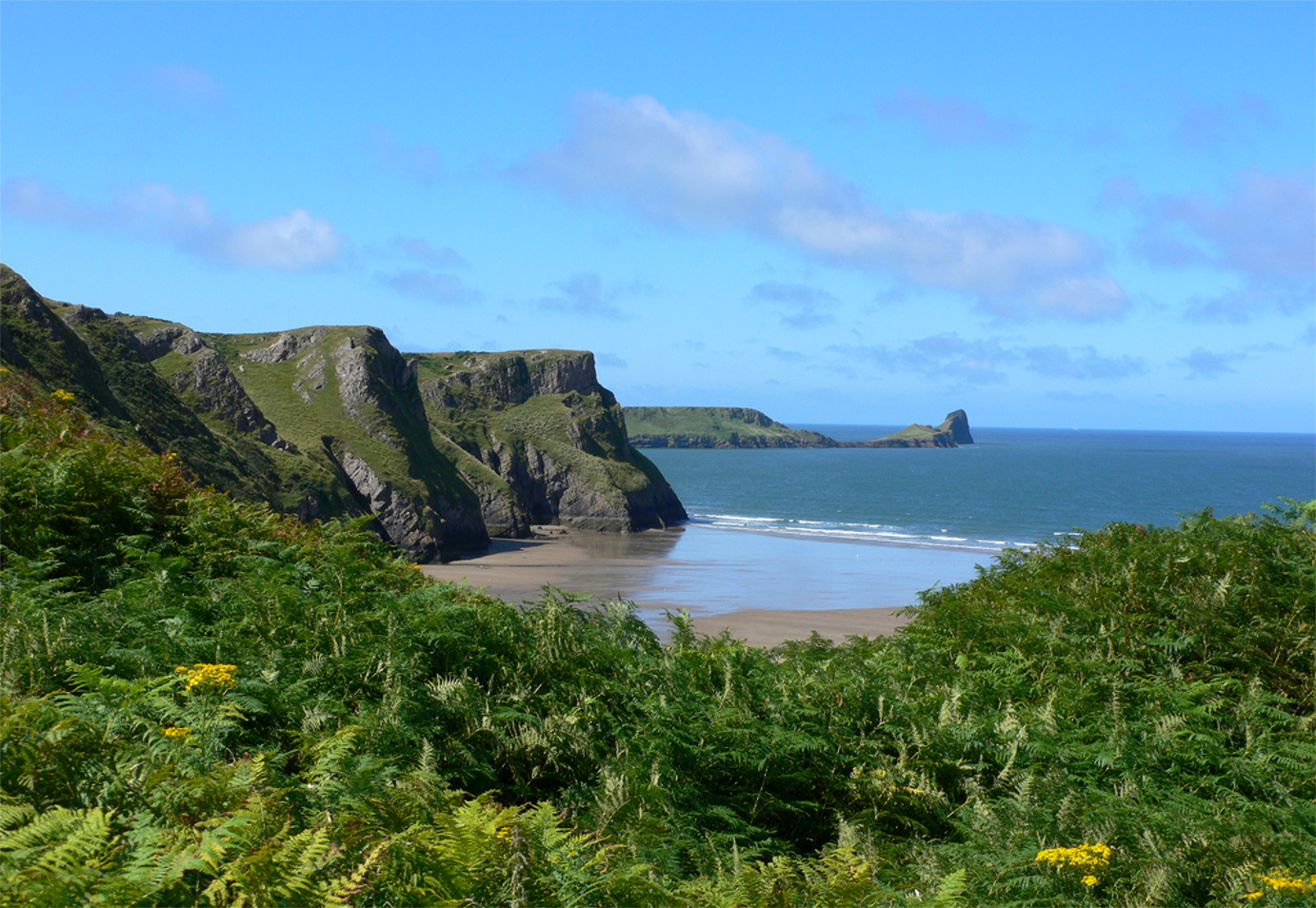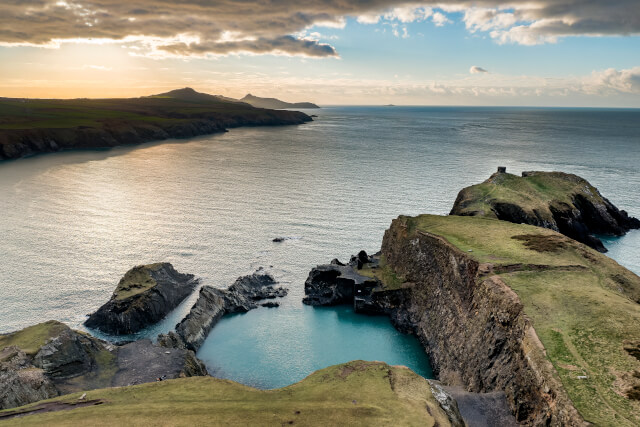A Rainy Day Guide to Seaside Towns
Have you booked your next getaway to the seaside and you're worried about the weather? Then our rainy day...

What better way to spend a day in South Wales than taking part in activities as a whole family that are completely free?
From Museums and botanical gardens to stunning, picturesque walking trails, we have plenty of suggestions for successfully keeping the whole family entertained, without pulling on the purse strings.
Here are 10 completely free days out to enjoy in South Wales…
![]()
The Brecon Beacons National Park is just 30 minutes from Cardiff, in South Wales, and is separated from Snowdonia by the 40-mile-long Cambrian Mountains. Carved in the Ice Age, this stunning site has been moulded by human activity over the last few millennia and is comprised of rolling green hills, charming waterfalls, limestone caves and imposing mountains.
Enjoy a quiet, more secluded adventure here. Crowds are rare as the park is so spacious. There are still many prehistoric monuments scattered about the slopes and a rich agricultural tradition in and around the local towns.
The scenery is vast and varied; expect to see the highest mountains in the south of Britain, grassy moorlands, remains of long-dormant volcanoes and scenic walking trails. Those who enjoy the remoteness of the great outdoors, along with a truly stunning landscape, will appreciate this unique National Park.
For more days out with a difference, browse some of our favourite hidden gems in South Wales.

The idyllic Pembrokeshire Coast spans 186 miles, and includes 58 beaches, 14 harbours and every cliff and cove between St Dogmaels and Amroth. Opened in 1970, the Pembrokeshire Coastal Path was the original National Trail in Wales. Around 85% of its total surface area runs through Pembrokeshire National Park, the UK’s only truly coastal National Park, meaning plenty of flora and fauna are visible.
To give you an idea of how vast this coastal path is, if you were to complete the entire walk in one go, it would take you around two weeks. Therefore, there are many compact trails to enjoy for those wanting to spend an afternoon exploring stunning surroundings.
There are more than 200 short walks to choose from, varying in length from one mile to an entire day trip. Some of the more notable walks include Porthgain to Whitesands, a 10-mile trek around the beautiful Porthgain Harbour, plus fabulous views of rocky bays and other idyllic beaches. There is also the Deer Park to Dale route, another 10-mile journey encompassing a hillfort dating back to the Iron Age and spectacular views of Skomer Island, the second-largest nature reserve in Wales.
Find more great walks in South Wales and browse through our Wales walking guide for further inspiration.
Cardigan Bay is home to the UK’s largest pod if dolphins and spotting them can be a daily treat for locals and visitors alike. Bottlenose dolphins and harbour porpoises are the most common mammal species found in the waters of the Irish Sea, but other dolphin species, Minke Whales, Fin Whales, Grey Seals and even the occasional Orca and Leatherhead Turtle have been spotted from time to time.
For your best chances of seeing marine wildlife, you need to choose your location and time of year carefully. To pretty much guarantee dolphin encounters, New Quay generally has daily sightings between June and October. You should be able to spot them between Aberystwyth and Fishguard all year round, but more frequently April – November.
The Cardigan Bay Marine Wildlife Centre is also a fantastic place to learn more about the local marine life and ways in which to protect it and is absolutely free.
Find out more about the amazing unique animals you can see in Wales.
Designated as the UK’s first Area of Outstanding Natural Beauty back in 1956, the Gower Peninsula is a breath taking sight to behold. The landscape is vast and varied, from stunning beaches to wild moors to limestone cliffs and excellent walking tracks.
This is a popular site for walkers, surfers and adrenaline junkies alike. You can get some of the best waves in Britain at Llangennith beach and it’s a great spot for coasteering – climbing the cliffs and jumping off into the water below – which is not for the faint-hearted or the inexperienced! There is also scenic Rhossili Bay, regularly voted amongst the very best of British beaches, ideal for a stroll in the sand.
The Peninsula is around 19-miles long in total, running from Mumbles and extending out westward, incorporating multiple beaches, stunning coastline and sections of the outstanding Wales Coast Path.
See more of the best beaches in Wales to visit.
The enchanting walls and towers of Cardiff Castle contain more than 2000 years of history and dates back to around 50AD when its Roman fort was constructed with the purpose of allowing easy access to and from the sea. The remains of the fort can still be seen today. The Castle is set within stunning parklands in the Welsh capital and is one of the country’s most visited and most significant sites.
The Castle was passed on through many notable families and reached the Bute family in 1766. The 2nd Marquess of Bute was responsible for turning Cardiff into the world’s greatest coal-exporting port. The Castle remained in the Bute family until the death of the 4th Marquess of Bute, in 1947. It was then given to the city of Cardiff. For the first 25 years, the Castle was home to the National College of Music and Drama and since 1974 has been one of Wales’ most popular attractions.
Nearby, you can visit stunning Bute Park, once the ‘back garden’ of the family. It is a hugely spacious area of mature parkland and a rare find in the centre of a city. The park itself attracts over 1,000,000 visits a year and plays host to the RHS Show Cardiff.
Find more fascinating things to do in Wales.
Tintern Abbey is the best-preserved medieval abbey in Wales. The abbey church was built twice over. The first was constructed in 1131 and helped to regenerate the area and encourage the growth of local economic life, in the nearby villages.
The rebuild was orchestrated by Roger Bigod, Lord of nearby Chepstow Castle, in the late 13th century. The monastery retained its original design, the ruins of which are visible today. It was a much grander structure with soaring gothic arches and windows and surrounded by substantial outbuildings.
Tintern was only the second Cistercian foundation in Britain, and the first in Wales. In recent years, a major conservation effort was undertaken to cement the site as one of the great glories of Gothic architecture in Britain.
Clyne Gardens is a botanical garden located in Swansea. The park was designed by Glynn Vivian of the Vivian family, who purchased Clyne Castle in 1860. The Gardens at Clyne were established by Admiral Algernon Walker-Heneage-Vivian who owned Clyne Castle from 1921 until his death in 1952.
He had a great influence on the gardens as we see them today, which can be seen in the landscaping of the Japanese Bridge, Admirals Tower and the Gazebo. The gardens consist of 19 hectares of land and more than 2,000 different plant species, including over 800 rhododendrons, something the gardens are renowned for.
If you’re looking for somewhere to stay, Sykes Cottages has over 500 fantastic South Wales Cottages to choose from. Take a look at our Places to Stay in Wales guide for more inspiration and for more fascinating things to do on your next holiday, browse our Wales Travel Guide.
Are you on the phone to our call centre? Your Customer ID is:
Get involved in the Discussion